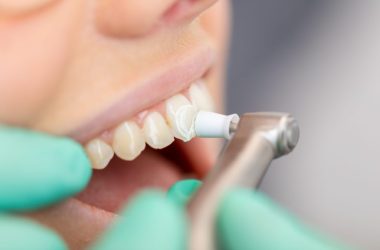Do you feel increased sensitivity to cold and hot foods? Does tooth pain and discomfort negatively impact your routine life? Well, what you notice may be due to an abnormal crack, or a fracture in your tooth, known as cracked tooth syndrome! Identifying the signs and treating the tooth at the earliest to prevent further deterioration is essential.
The dentist in Woodbridge and their expert team of dental specialists offer comprehensive and compassionate care for people with a cracked tooth to improve the quality of oral health.
A comprehensive guide to cracked tooth
A cracked or fractured tooth refers to a condition marked by a fissure within the tooth. This crack may vary in severity, ranging from small and inconsequential to significant enough to split the affected tooth.
Your tooth may crack due to:
- Normal aging process
- Bruxism (grinding of teeth)
- Large restorations
- Abrupt temperature changes
- Chewing hard foods
Signs and symptoms may include:
- Visible crack or craze on the tooth surface
- Unexplained persistent pain while chewing
- Extreme tooth sensitivity to hot and cold foods
- Sudden tooth sensitivity to sweetness
- Difficulty pinpointing the exact location of the pain
- Swelling around the tooth
The types of cracked teeth include:
- Craze: It is a vertical fissure that is often considered to be a regular part of the tooth anatomy.
- Oblique supragingival crack: It affects only the tooth crown and is present above the gum line (supragingival).
- Oblique subgingival crack: It may extend beyond the gum line (subgingivally) to a point where the jawbone begins.
- Vertical furcation crack: It occurs when the roots of the tooth are involved, affecting the nerves.
- Oblique root crack: This does not involve the tooth crown but is apparent only below the gum line and the jawbone.
- Vertical apical root crack: It appears at the root tip (apex of the root).
How is a cracked tooth treated?
A cracked tooth can be easily diagnosed during an oral examination and dental X-rays. Treatment usually depends on the severity of the condition and the type of crack present. Often a cracked tooth is treated through root canal procedure. This involves the removal of the diseased, damaged, or inflamed pulp and restoring it with a biocompatible material (gutta-percha). The treated tooth is then restored permanently with a suitable crown. However, if the crack is too severe, your dentist will eventually recommend extraction. You can eventually replace the missing tooth either through dentures, bridges, or a dental implant.
Seek dental care immediately if you notice symptoms of a cracked tooth for effective oral rehabilitation.




















